A community museum's quest for sustainability
Writer: Zhang Yu | Editor: Lin Qiuying | From: Original | Updated: 2025-02-07
Strolling down Jingtian East Road in Shenzhen’s Futian District, pedestrians might stumble upon a landscaped courtyard surrounded by pristine white walls and brimming with a variety of flowers and plants. Upon closer inspection, one would discover that the courtyard is a sustainability-themed community museum called the ZiShi ESG Garden.
At its entrance, a sign informs visitors that admission is complimentary, and the museum is open for the majority of the week, with the exception of Mondays and public holidays. Dubbed as the city’s first sustainable development-themed community museum, it includes a gallery space and two small outdoor gardens.
Dedicated to educating the community about the research and application of the United Nations’ Sustainable Development Goals (SDGs), the museum collaborates with artists and professional organizations through collection, research, exhibition, and education to disseminate the principles, culture, and lifestyle associated with the SDGs.
Restaurant-turned museum
For those new to the community, it might come as a surprise to learn that this space has been thoughtfully repurposed. Once a bustling Hunan cuisine restaurant, it has been gracefully converted into a community museum.
A few years ago, the property became vacant. Upon hearing this, Susanna Zhu, curator of the ZiShi ESG Garden, reached out to the landlord and pitched her idea of turning it into a community museum.
“When I learned that this space was available for lease, I made the decision to rent it within a mere three days,” Zhu told Shenzhen Daily during an exclusive interview.
“The landlord, who worked in the cultural industry before retirement, was incredibly understanding. He resonated with our vision immediately and believed we were the perfect fit for the property. Consequently, he promptly adjusted the rent to a more affordable range for me,” she said.
After the lease contract was signed in 2023, Zhu meticulously transformed the space into the community museum that she envisioned. On May 18, 2024, also International Museum Day, the ZiShi ESG Garden officially opened its doors.
The overall spatial planning and design of the ZiShi ESG Garden were masterminded by Zhu, while the ESG Botanical Garden within it was designed by Hong Kong designers.
On the left side of the first floor is a gallery space that has hosted exhibitions and a variety of activities, and there is also an office room reminiscent of British decor.
The second floor, which consists of the Ink Tang Studio and a tea room, is adorned with various cultural and creative products sourced from museums across the globe. The expansive landscape windows frame the verdant street scenes outside, offering a refreshing view.
According to Zhu, who has been in the cultural industry for over a decade, the ZiShi ESG Garden was built in line with international museums standards. “A museum should revert to its intrinsic purpose, as museums are a vantage point for the dissemination of values.”
Leveraging her years of experience in the industry, Zhu integrated the theme of global sustainable development, a topic of significant interest in recent years, when building the ZiShi ESG Garden. Meanwhile, as a museum, the ZiShi ESG Garden houses distinctive collections and holds a diverse array of exhibitions and activities.
“We have materialized this concept of sustainability into two dimensions. One is the sustainability of natural resources, hence we encourage the planting of flowers and plants. As such, we transformed the former cement ground of the restaurant into a vibrant garden, complete with green lawns that we laid by hand,” Zhu shared.
More importantly, the building prioritizes the use of sustainable materials wherever feasible, ranging from the floor tiles to the handbasin, and from the eco-friendly office furniture to the exhibition display boards.
“The second is the inheritance of cultural traditions, dedicated to the protection and continuation of our cultural heritage,” she said.
The museum boasts a significant collection, including a complete set of “The Series of Ancient Chinese Paintings.” Compiled and co-published by Zhejiang University and the Cultural Heritage Bureau of Zhejiang Province, this series contains a collection of 12,405 ancient Chinese paintings from 263 cultural institutions and museums around the globe.
Among them, 9,155 pieces or sets are from domestic collections and 3,250 from overseas collections, covering most of the preserved “national treasures.” The series contains five complete collections spanning different dynasties, comprising 226 books in 60 volumes. It is by far the most comprehensive archive of ancient Chinese paintings with the most authentic images and the most refined printing quality.
The masterpiece is arranged neatly on the bookshelf on the first floor, instilling a sense of reverence in viewers confronted with the large collection.
Every Friday evening, the museum hosts a weekly “book opening” event, which is hosted by Tang Ping, resident artist and director of the Ink Tang Studio. At each gathering, one book is carefully removed from the shelf and flipped through, allowing the public to delve into its contents and appreciate its beauty.
Small oasis of culture
Zhu, who grew up in Shenzhen, has been involved in the cultural field since finishing her studies at university. A chance educational experience sparked her intense fascination with museum development and operations.
According to her, she and her team have visited over 600 museums worldwide over the past decade, gathering an extensive range of professional insights.
Zhu explained the rationale behind funding a community museum herself and keeping it open to the public without charge. She said the primary goal was never financial gain, but to create a communal space for sharing cultural insights. As people’s quality of life improves, there’s a growing appetite for museum experiences.
“I have been advocating for sustainable museums and museums that are valuable and meaningful to the public,” she said.
Zhu pointed out that while the community museum’s daily exhibits and cultural interactions are a public good, museum-related consulting and operational services are commercial ventures.
In recent years, Zhu’s team has provided professional museum consulting and operational services to over 50 institutions across the country, including museums and art galleries, government departments, foundations, cultural brands, and enterprises.
“I’m very thankful for this opportunity. Last year marked a decade since we embarked on our entrepreneurial journey. Over the past 10 years, we have had some thoughts and visions on the future development of China’s museum industry and have articulated these insights through this project,” Zhu said.
This innovative approach to creating a community museum not only elevates the aesthetic appeal of the community landscape, but also amplifies a community’s cultural role, drawing in numerous locals and visitors.
Since opening last May, the museum has welcomed thousands of visitors, including international guests from Indonesia and Australia.
Zhu said that the overseas guests were taken aback to find that a community in China had already reached such an advanced stage. They had assumed that it would be feasible for a city to attain this level of development, but the notion of a community where residents could casually walk into an exhibition after grocery shopping was truly amazing to them.
Through art exhibitions and nature education, the museum is exploring the sustainable development of cultural heritage and natural resources. Notably, it also aims to provide a space where art and culture are accessible to local residents and have an impact on their lives.
“Our intention is not for it to be merely accessible, but to have a profound impact. I believe it will exert a quiet yet significant influence on individuals,” said Lora Liu, deputy curator of the ZiShi ESG Garden.
While the museum regularly hosts activities in which locals can learn and co-create, many locals may visit their botanical garden to admire the blooms whenever they have a moment to spare. “Some grandparents bring their grandchildren to our garden and have made it a routine to view the flowers each morning,” Liu said.
The Chinese sentence inscribed on the white walls outside the museum serves as a poignant reminder: “Always learn and never forget to take the time to admire the flowers.”
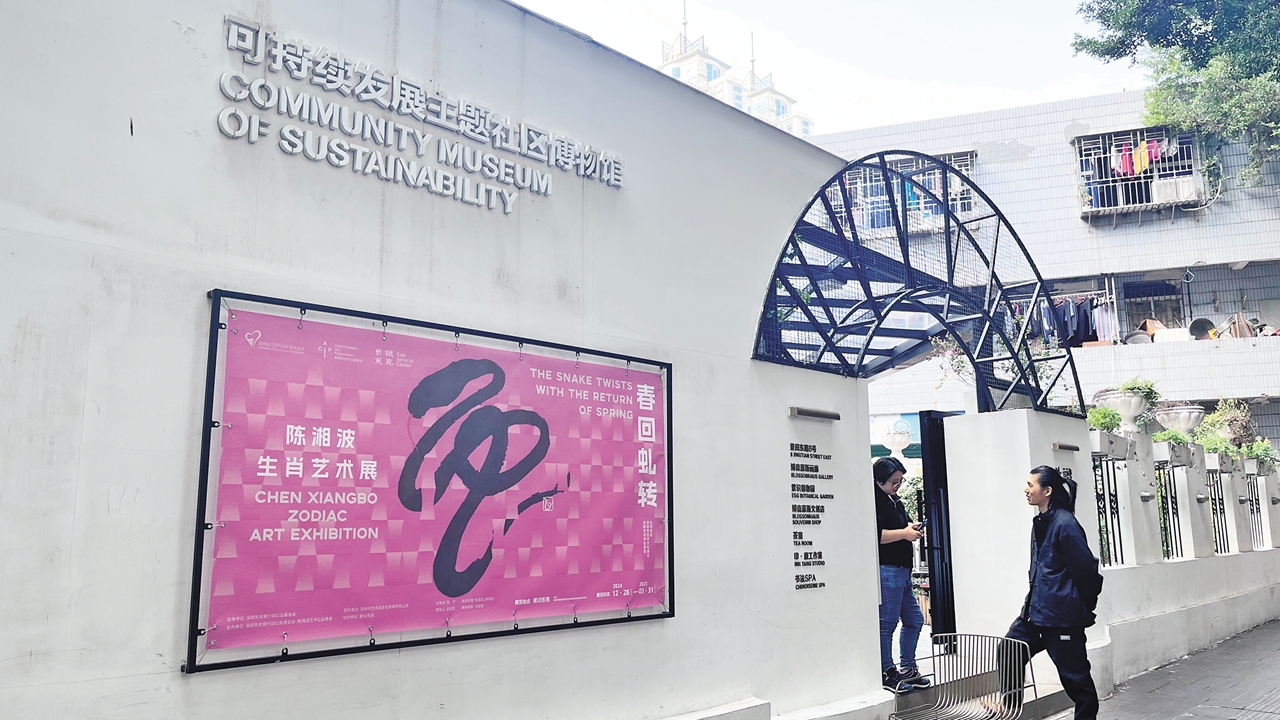
The entrance of the ZiShi ESG Garden on Jingtian Road East in Futian District. Photos by Zhang Yu except otherwise stated

Various plants thrive in the courtyard of the ZiShi ESG Garden, a sustainability-themed community museum.
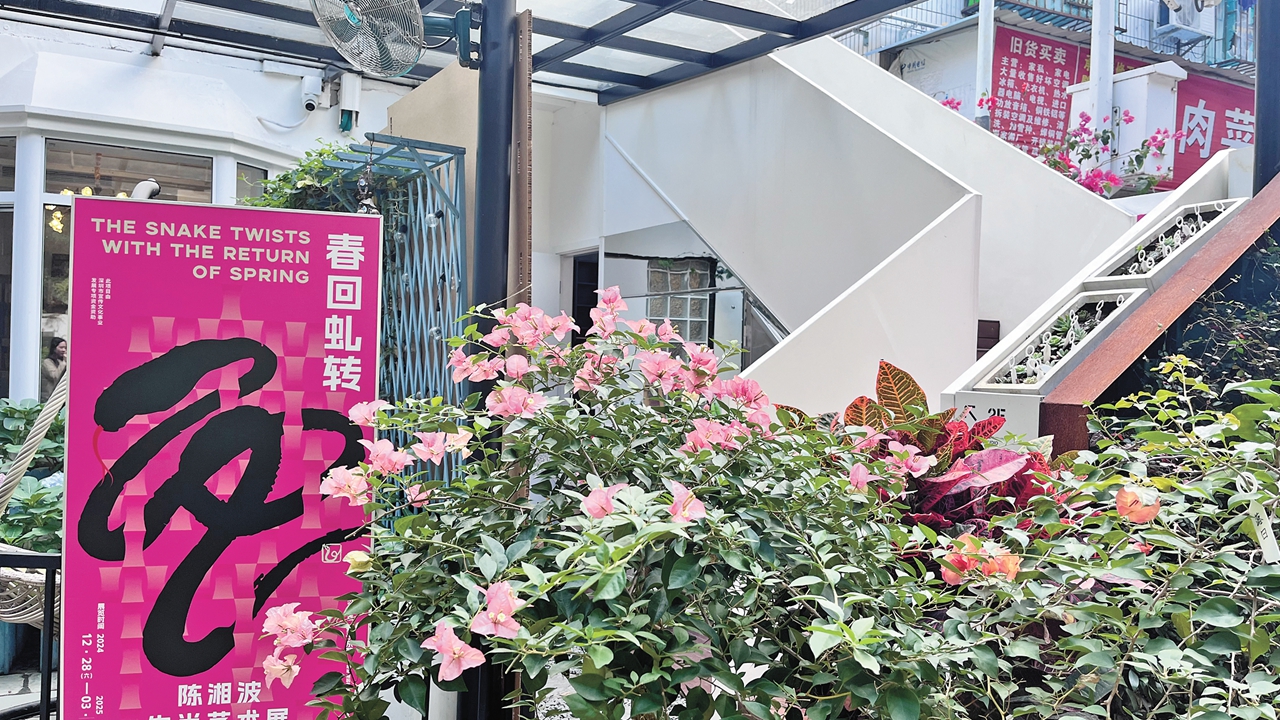
Various plants thrive in the courtyard of the ZiShi ESG Garden, a sustainability-themed community museum.
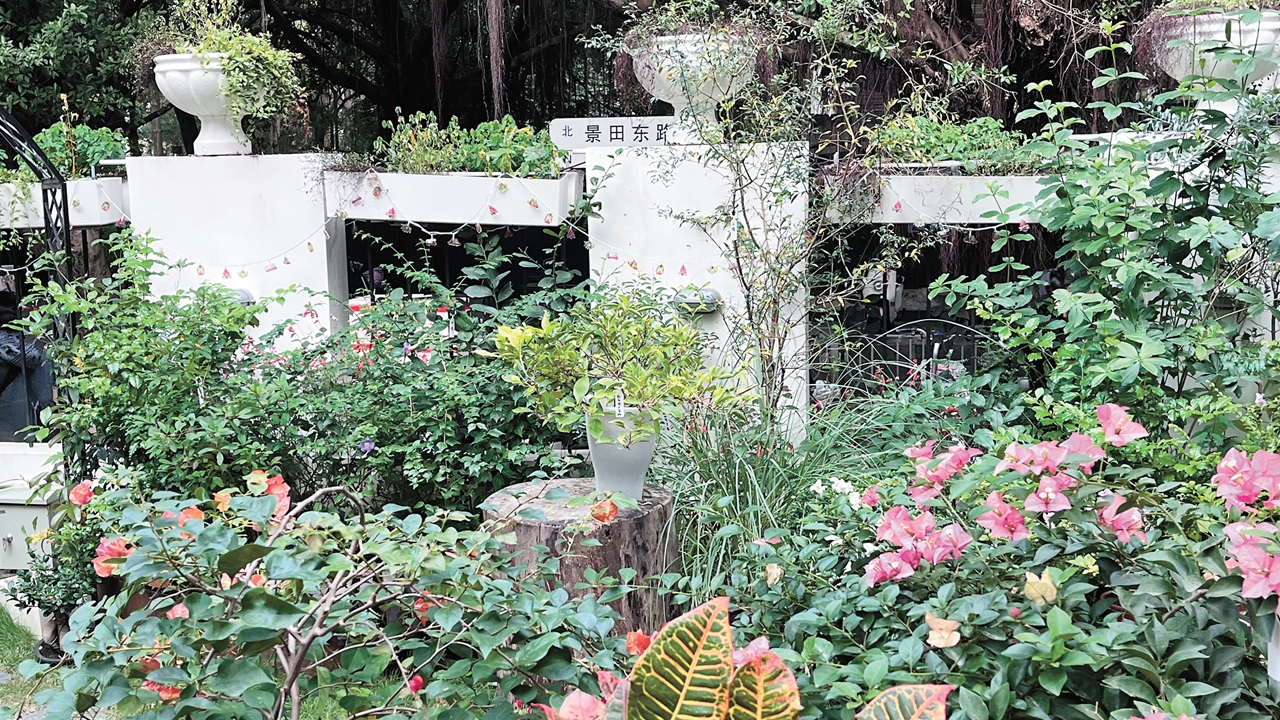
Various plants thrive in the courtyard of the ZiShi ESG Garden, a sustainability-themed community museum.
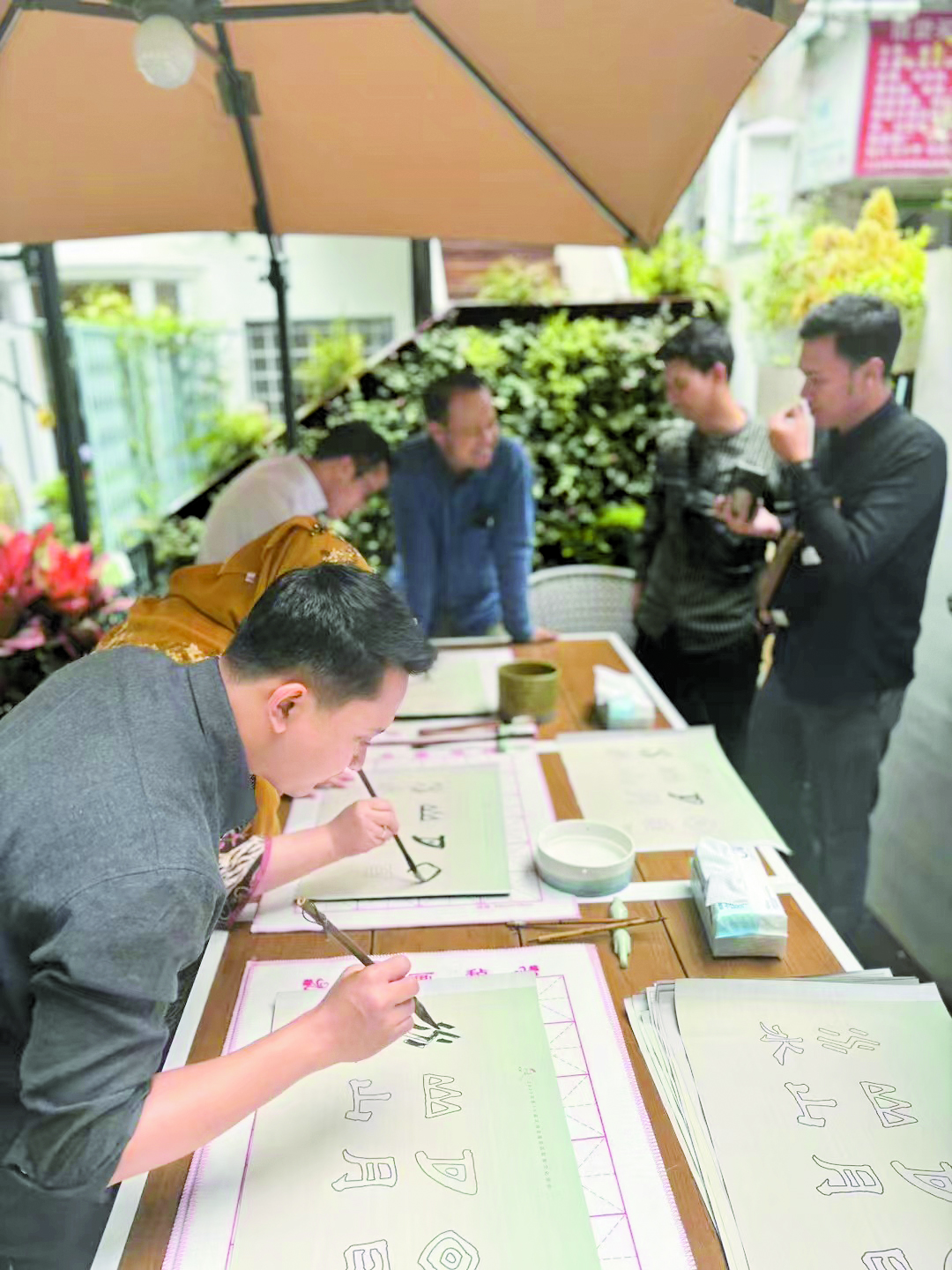
Guests from Indonesia write Chinese calligraphy at the ZiShi ESG Garden during their visit Aug. 7, 2024. Courtesy of the interviewee
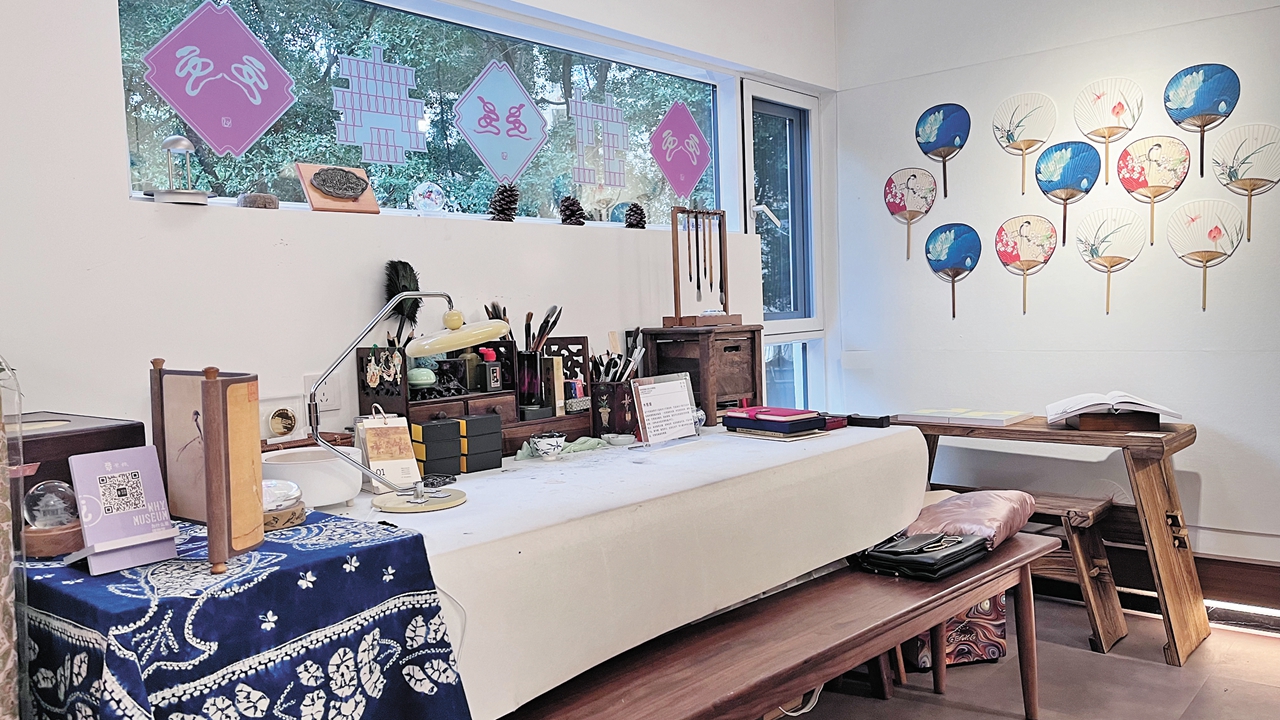
A calligraphy room on the second floor of the ZiShi ESG Garden.
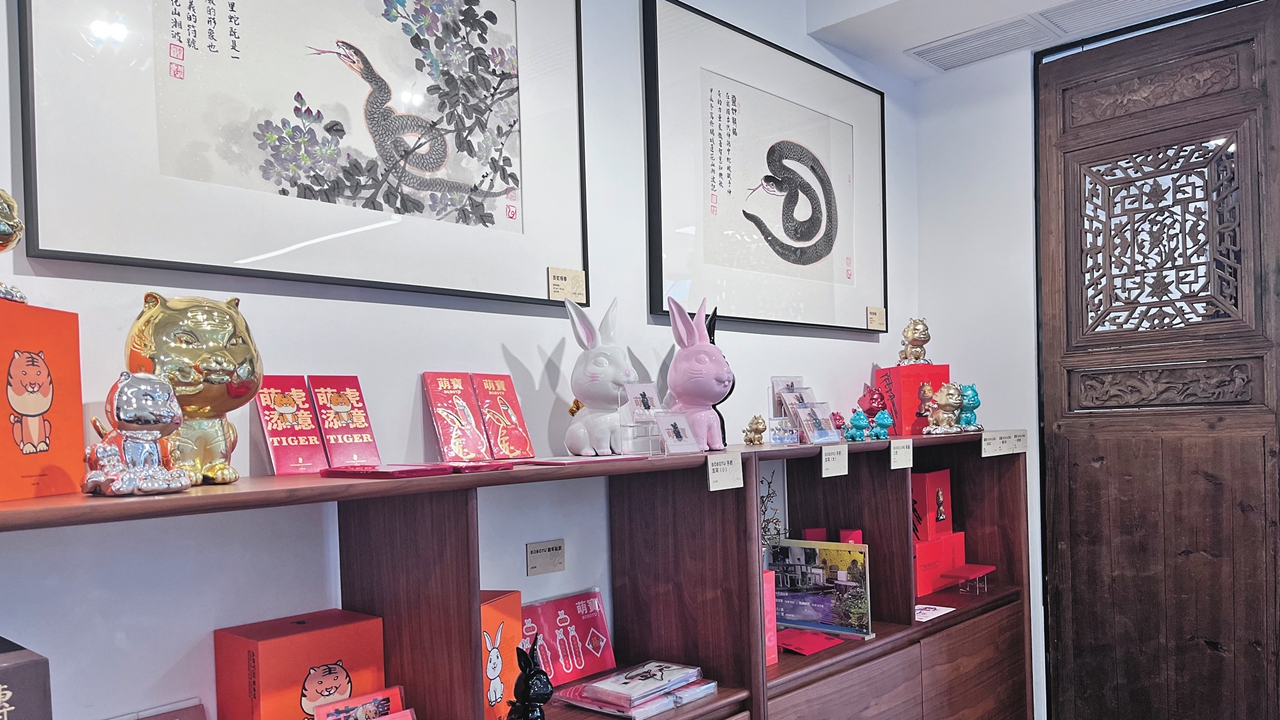
Exhibits of Chen Xiangbo zodiac art exhibition at the ZiShi ESG Garden.
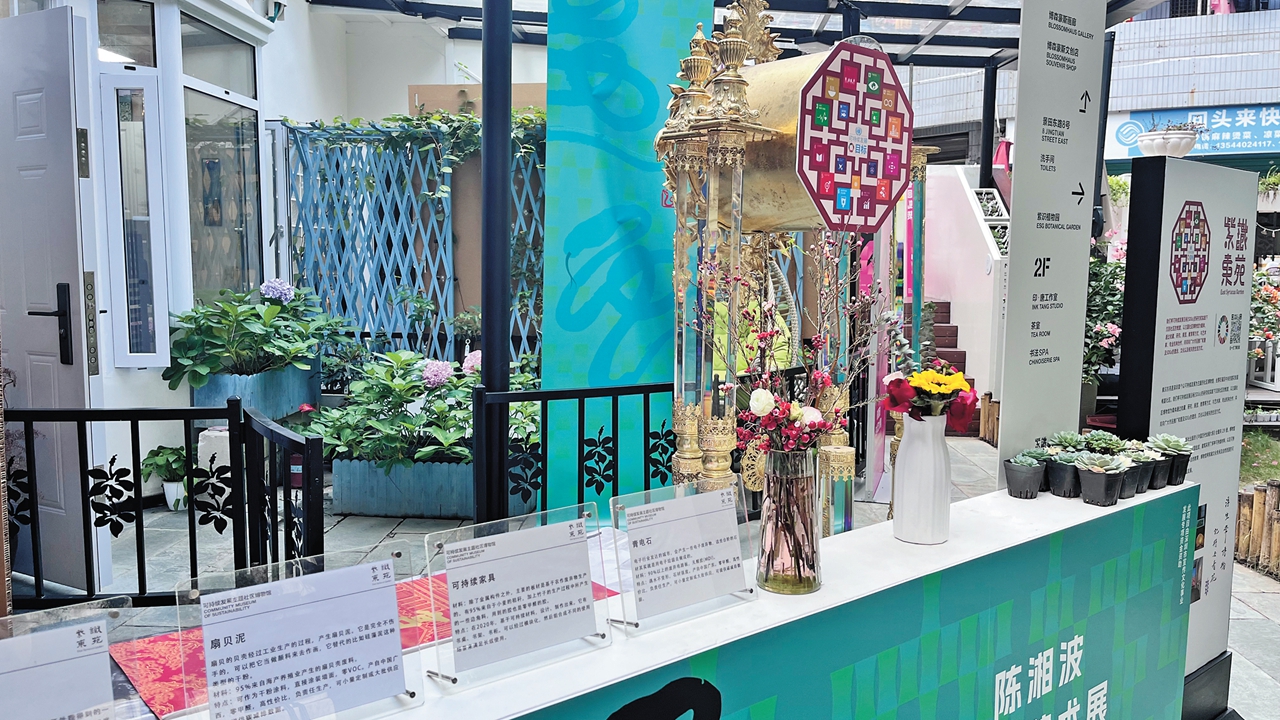
Chen Xiangbo zodiac art exhibition is being held at the ZiShi ESG Garden.